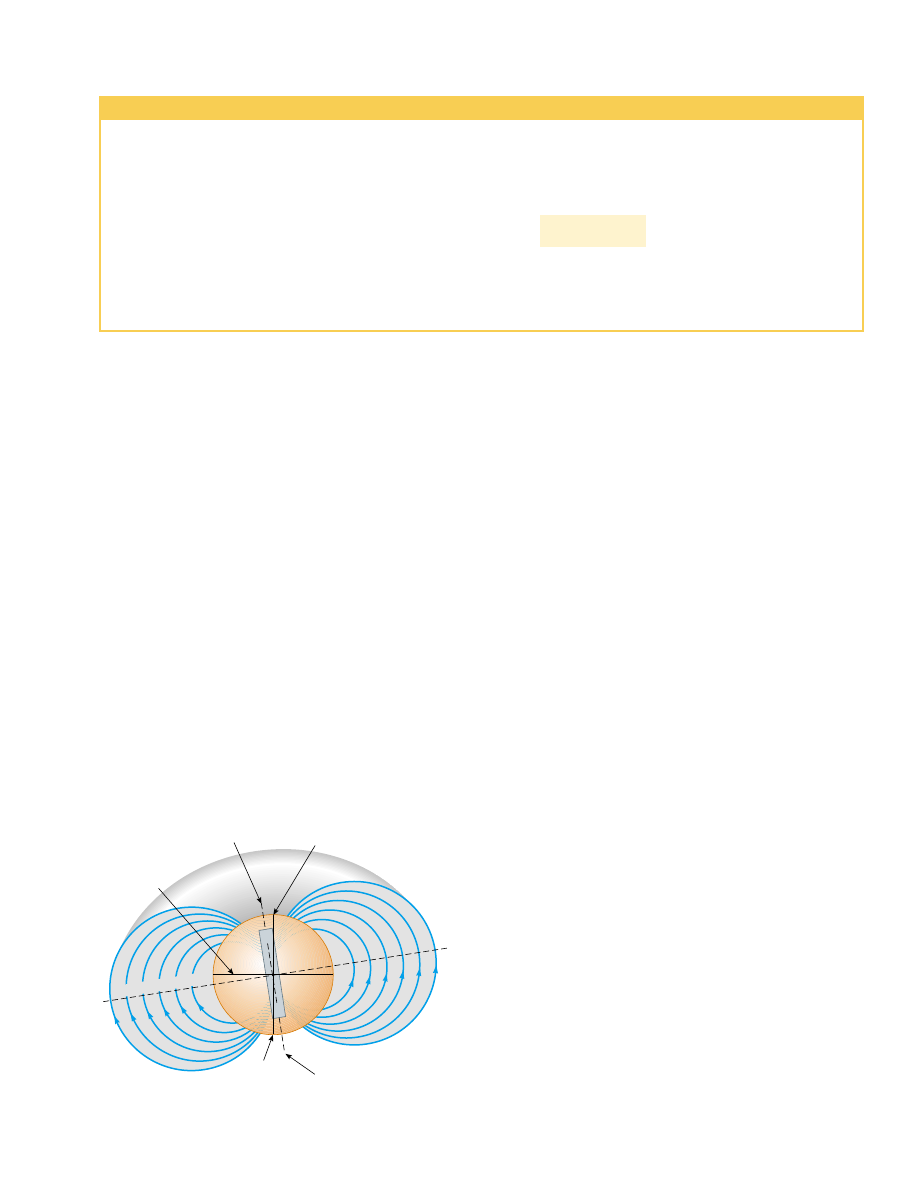Physics For Scientists And Engineers 6E - part 239

SECTION 3 0.9 • The Magnetic Field of the Earth
953
Estimate the saturation magnetization in a long cylinder of
iron, assuming one unpaired electron spin per atom.
Solution The saturation magnetization is obtained when
all the magnetic moments in the sample are aligned. If
the sample contains n atoms per unit volume, then the
saturation magnetization M
s
has the value
where # is the magnetic moment per atom. Because the
molar mass of iron is 55 g/mol and its density is 7.9 g/cm
3
,
M
s
"
n#
Example 30.11 Saturation Magnetization
the value of n for iron is 8.6 & 10
28
atoms/m
3
. Assuming
that each atom contributes one Bohr magneton (due to one
unpaired spin) to the magnetic moment, we obtain
This is about half the experimentally determined saturation
magnetization for iron, which indicates that actually two
unpaired electron spins are present per atom.
8.0 & 10
5
A/m
"
M
s
"
(8.6 & 10
28
atoms/m
3
)(9.27 & 10
'
24
A(m
2
/atom)
30.9 The Magnetic Field of the Earth
When we speak of a compass magnet having a north pole and a south pole, we should
say more properly that it has a “north-seeking” pole and a “south-seeking” pole. By this
we mean that one pole of the magnet seeks, or points to, the north geographic pole of
the Earth. Because the north pole of a magnet is attracted toward the north
geographic pole of the Earth, we conclude that
the Earth’s south magnetic pole is
located near the north geographic pole, and the Earth’s north magnetic pole is
located near the south geographic pole. In fact, the configuration of the Earth’s
magnetic field, pictured in Figure 30.36, is very much like the one that would be
achieved by burying a gigantic bar magnet deep in the interior of the Earth.
If a compass needle is suspended in bearings that allow it to rotate in the vertical
plane as well as in the horizontal plane, the needle is horizontal with respect to the
Earth’s surface only near the equator. As the compass is moved northward, the
needle rotates so that it points more and more toward the surface of the Earth.
Finally, at a point near Hudson Bay in Canada, the north pole of the needle points
directly downward. This site, first found in 1832, is considered to be the location of
the south magnetic pole of the Earth. It is approximately 1 300 mi from the Earth’s
geographic North Pole, and its exact position varies slowly with time. Similarly, the
north magnetic pole of the Earth is about 1 200 mi away from the Earth’s geographic
South Pole.
Figure 30.36 The Earth’s
magnetic field lines. Note that a
south magnetic pole is near the
north geographic pole, and a
north magnetic pole is near the
south geographic pole.
North
geographic
pole
South
magnetic
pole
Geographic
equator
South
geographic
pole
North
magnetic
pole
N
S
Magnetic equator